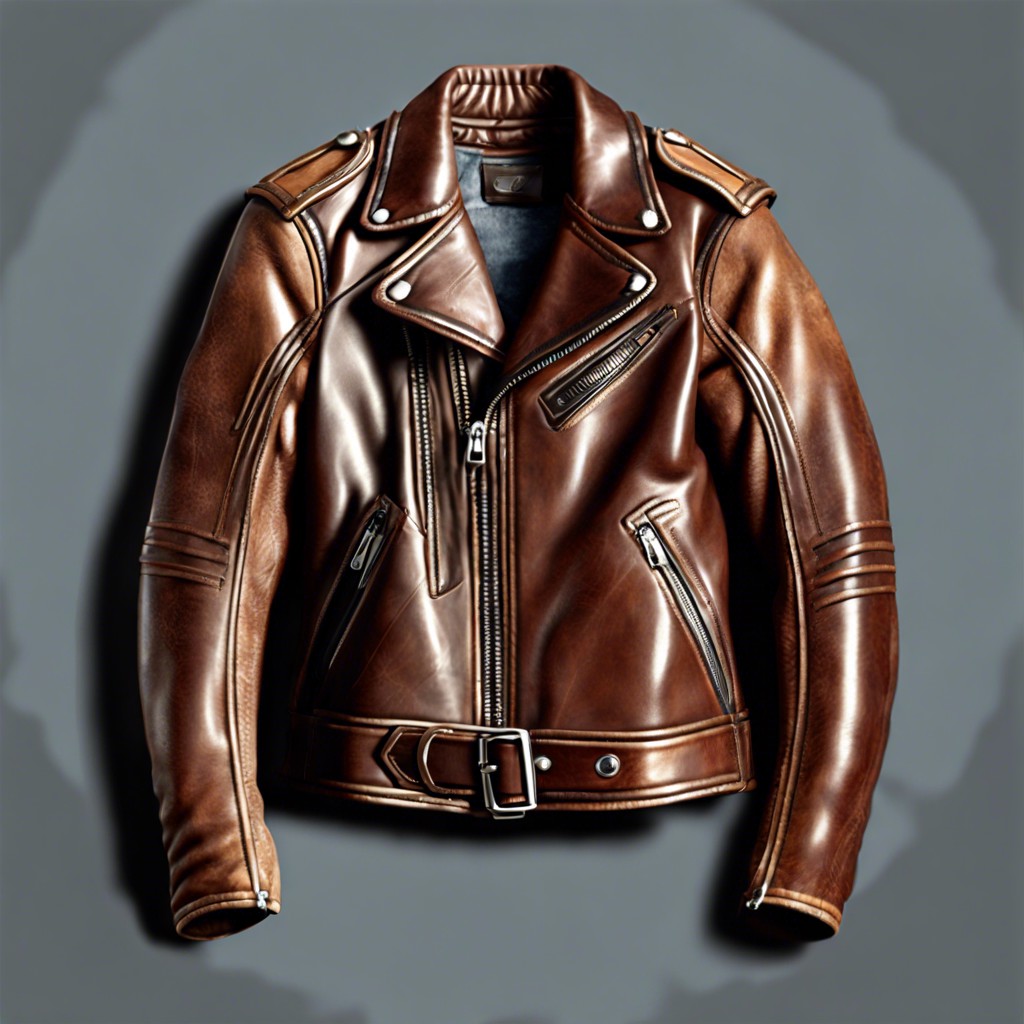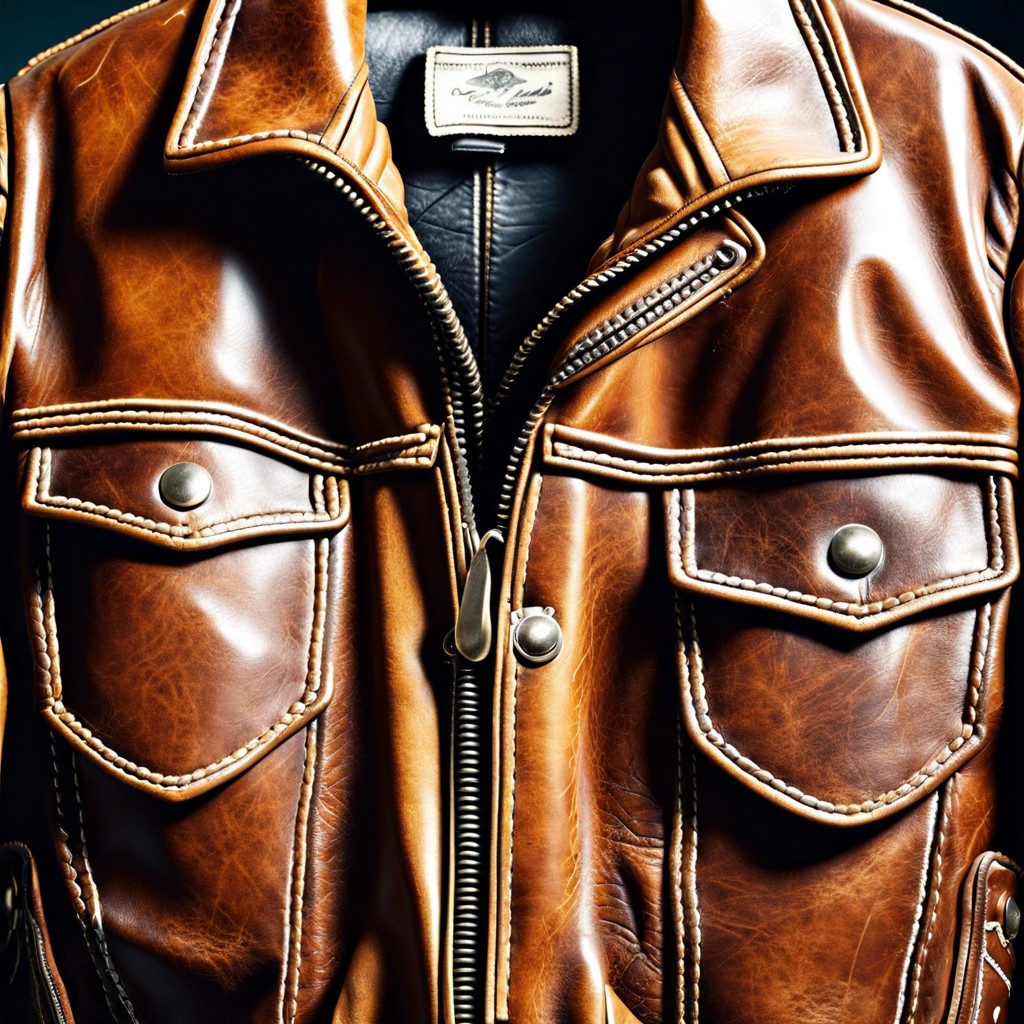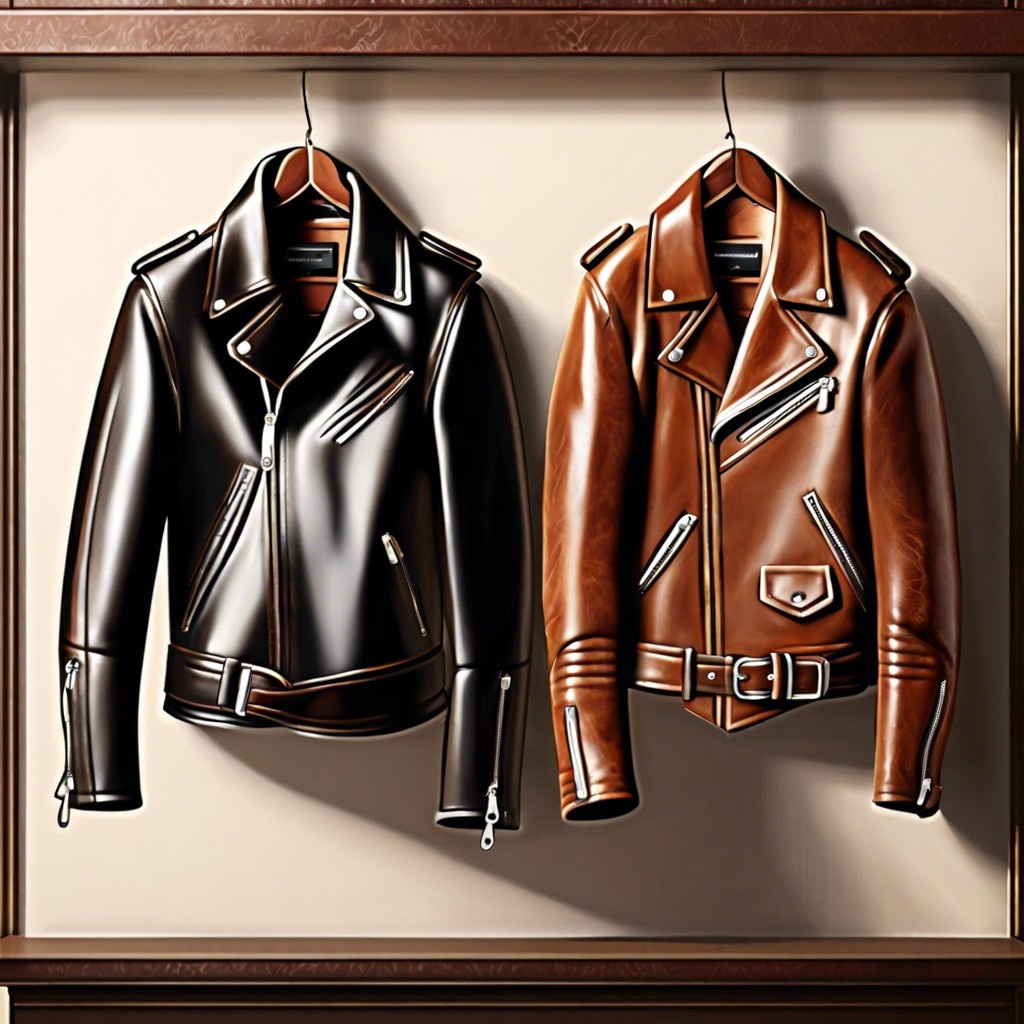Last updated on
Discover the key factors to consider when selecting a vintage leather jacket to add a touch of history and style to your wardrobe.
Key takeaways:
- Authenticity is determined by stitching, materials, and fastenings
- Quality features include a well-worn patina, sturdy stitching, and intact linings
- Care for vintage jackets with regular cleaning, conditioning, and proper storage
- Find vintage leather jackets at thrift stores, online marketplaces, and estate sales
- Patience is key when searching for the perfect piece
Definition of Vintage Leather Jackets

Vintage leather jackets are steeped in history, typically hailing from a previous era, often 20 years or older. These treasured cover-ups serve as a fashion time capsule, reflecting the style and craftsmanship from the period they originate. Substantial in build and rich with character, these jackets may come from military backgrounds, iconic fashion trends of bygone decades, or famous manufacturers that have since altered their production techniques. Wearing one is akin to donning a piece of history, as each has a story that adds to its appeal. Rarity and condition are key factors that contribute to the value and desirability of vintage leather jackets. With the patina of age, they gain an allure that contemporary jackets can’t quite emulate.
Identifying Authentic Vintage Leather Jackets

Authenticity hinges on detail. Examine stitching patterns; irregular stitches or a lack of symmetry suggest hand-sewing, characteristic of older garments. Peering inside, a tag or label, often worn or faded, indicates origin and age. Recognize brands prominent in past decades, such as Schott NYC, known for their 1950s Perfecto motorcycle jacket.
Materials tell tales. Genuine vintage jackets typically boast thicker, more durable leather compared to their modern replicas. Over time, leather develops a patina, giving the material depth and character that can’t be replicated in newer pieces.
Fastenings can also be a giveaway. Zippers on truly vintage jackets often have the name of the manufacturer, such as Talon or Conmar, prominently displayed, and can help trace back to specific eras. Snaps and buttons, too, may carry the imprint of a brand.
Lastly, consider the cut of the jacket: boxier silhouettes may indicate mid-century pieces, while a more fitted style could come from the 1980s or 1990s. Comparing the jacket to fashion trends from different eras can provide clues to its age.
Key Features of a Quality Vintage Leather Jacket

A well-worn patina is one tell-tale sign of a quality vintage leather jacket. Over years of use, a jacket develops a sheen that synthetic replicas can’t mimic. Inspect the stitching; it should be even, with a heavy thread that’s stood the test of time. Zippers and other hardware are likely to have a certain heft, often made of brass or another durable metal.
High-quality vintage leather jackets often feature linings that are intact and without significant damage. These linings can be made of cotton, silk, or sometimes even fur, and they often bear the hallmark of craftsmanship. Pockets are another aspect to consider. Well-made jackets have pockets that are seamlessly integrated into the design, indicating attention to detail.
Pay attention to label tags as well; they can provide clues to authenticity and era. Recognized brands carry a history, and finding a tag with a date or a place of manufacture contributes to the jacket’s narrative.
In terms of fit, vintage jackets may not adhere to modern sizing standards. It’s common for them to be more form-fitting, reflecting the fashion of the era in which they were made. When considering a purchase, trying on the piece is critical to ensure the right fit for your frame.
Caring for Vintage Leather Jackets

Maintaining the condition of a vintage leather jacket involves regular cleaning and conditioning. Begin by softly wiping the surface with a damp cloth to remove dust. Apply a leather cleaner suitable for vintage materials to address more stubborn stains, but always perform a patch test on an inconspicuous area first.
Conditioning is critical for preventing cracks and keeping the leather supple. Use a leather conditioner that is appropriate for aged leathers to avoid harming the integrity of the jacket. Distribute a small amount evenly, massaging gently into the material.
Store your jacket in a cool, dry place on a wide, padded hanger to maintain its shape. Avoid plastic covers, as leather needs to breathe; instead, opt for a fabric garment bag.
Keep leather away from direct sunlight and high heat sources which can cause fading and drying. If the jacket gets wet, air dry it naturally, away from artificial heat. In case of serious damage, seek a professional who specializes in vintage clothing repairs to ensure the best care for your investment piece.
Where to Find Vintage Leather Jackets

Thrift stores and vintage shops are treasure troves for these time-honored garments, often housing a plethora of styles and sizes at various price points. For those who prefer the hunt from the comfort of their home, online marketplaces and specialized vintage clothing websites offer a vast array of options, each with detailed descriptions and condition reports. Estate sales, garage sales, and auctions can be unexpected sources, where one might stumble upon a once-loved jacket with a rich history. Another avenue to consider is consignment stores, which curate their collections, providing an edited selection of high-quality vintage leather jackets. Remember, patience is key when searching for that perfect piece; it requires sifting through many to find the one that fits your style and story.
Related:




